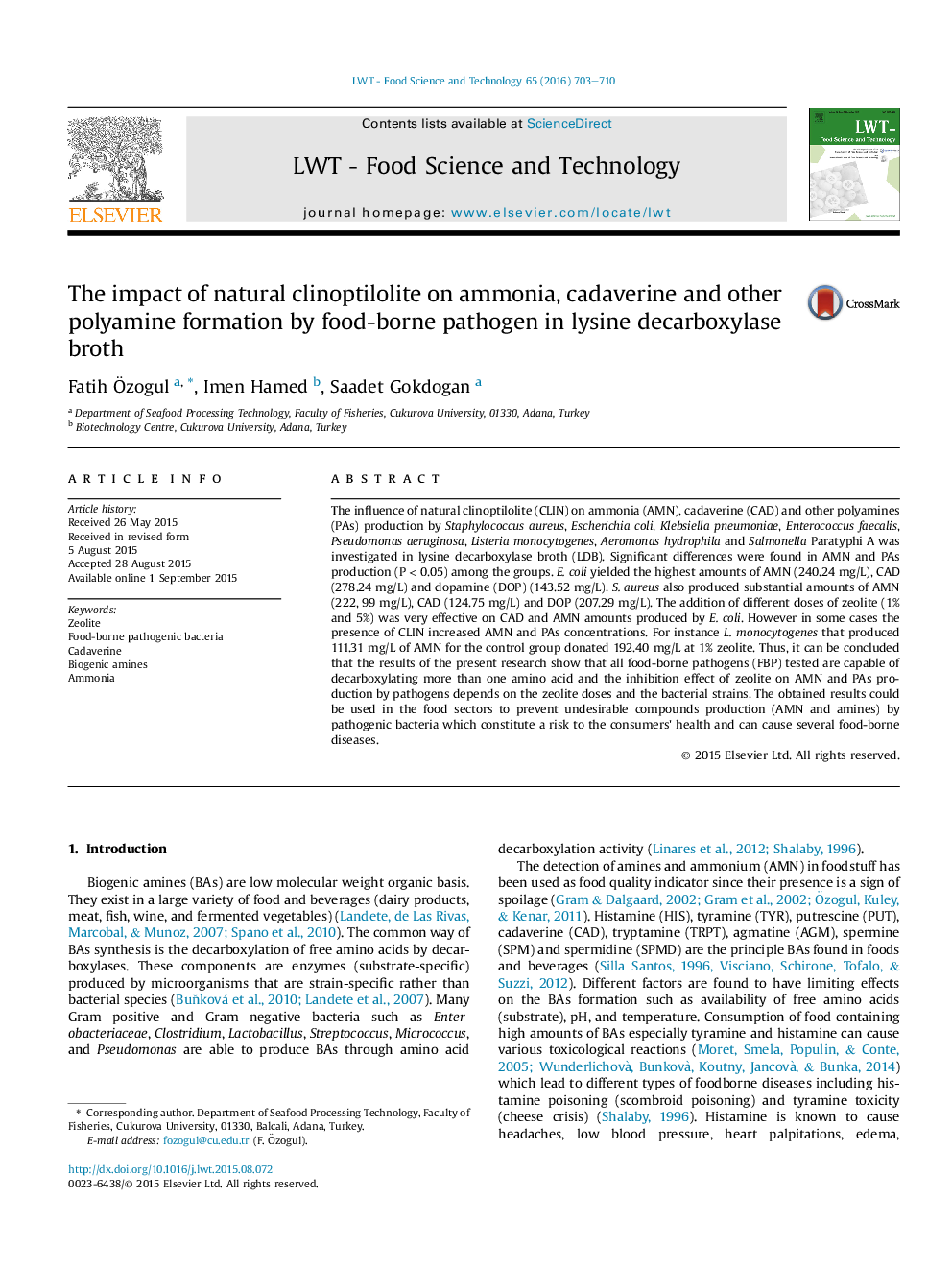| کد مقاله | کد نشریه | سال انتشار | مقاله انگلیسی | نسخه تمام متن |
|---|---|---|---|---|
| 6401691 | 1628532 | 2016 | 8 صفحه PDF | دانلود رایگان |
- Effect of natural zeolite (clinoptilolite) on polyamines and ammonia production by pathogens were tested.
- Ammonia, cadaverine and other polyamines production were inhibited by clinoptilolite.
- Inhibition and stimulation effects of clinoptilolite have been noticed on polyamines formation.
- Potential use of clinoptilolite as food preservative against bacterial polyamine production was investigated.
The influence of natural clinoptilolite (CLIN) on ammonia (AMN), cadaverine (CAD) and other polyamines (PAs) production by Staphylococcus aureus, Escherichia coli, Klebsiella pneumoniae, Enterococcus faecalis, Pseudomonas aeruginosa, Listeria monocytogenes, Aeromonas hydrophila and Salmonella Paratyphi A was investigated in lysine decarboxylase broth (LDB). Significant differences were found in AMN and PAs production (P < 0.05) among the groups. E. coli yielded the highest amounts of AMN (240.24 mg/L), CAD (278.24 mg/L) and dopamine (DOP) (143.52 mg/L). S. aureus also produced substantial amounts of AMN (222, 99 mg/L), CAD (124.75 mg/L) and DOP (207.29 mg/L). The addition of different doses of zeolite (1% and 5%) was very effective on CAD and AMN amounts produced by E. coli. However in some cases the presence of CLIN increased AMN and PAs concentrations. For instance L. monocytogenes that produced 111.31 mg/L of AMN for the control group donated 192.40 mg/L at 1% zeolite. Thus, it can be concluded that the results of the present research show that all food-borne pathogens (FBP) tested are capable of decarboxylating more than one amino acid and the inhibition effect of zeolite on AMN and PAs production by pathogens depends on the zeolite doses and the bacterial strains. The obtained results could be used in the food sectors to prevent undesirable compounds production (AMN and amines) by pathogenic bacteria which constitute a risk to the consumers' health and can cause several food-borne diseases.
Journal: LWT - Food Science and Technology - Volume 65, January 2016, Pages 703-710
